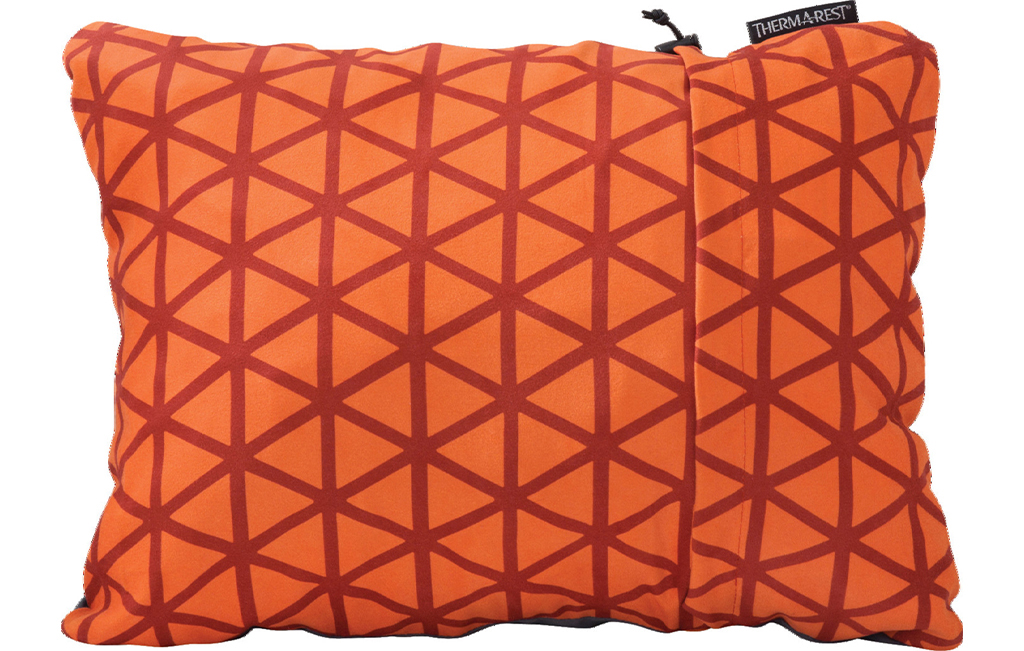I always thought that camping was supposed to be uncomfortable. Everything from abandoning four walls and a mattress to rubbing your heels raw from big miles in big boots to sticking to the plan even when the skies open requires some amount of resilience. I believed that part of the glory of backpacking is in the battle—in proving that you’re tough. Backpacking is type-II fun, after all: painful in the process but full of bragging rights.
Even today, I still sometimes think that is true. Freezing lake dips are usually worth it, as are summits that leave you breathless, and I’ve never regretted a 4am wake-up call for sunrise. But not everything needs to be a fight. Like sleep.
In my 20s, I prided myself on spending more summer nights in my sleeping bag than in a bed. I was guiding then. I’d stuff a puffy jacket and some old, stinky layers into a stuff sack and call it a pillow, shifting in the night to work around the wrinkles and zippers and seams. I never slept well.
As I got older, that sleeplessness brought with it new bodily suffering like achy joins and a perma-cricked neck. Still, I thought my sleeplessness was some sort of badge of honor—physical proof that I was legitimate and tough like other guides I knew and like the sorts of people I saw across my social media. I was a minimalist and I never complained.
But four years ago, while on a backpacking trip with my childhood best friend, I glimpsed a new way of life. As we rolled out our sleeping bags, I watched her shake out a foamy pillow. “It’s my comfort item,” she said matter-of-factly when I looked surprised. “If I can sleep well, everything is better.”
Kate is an Outward Bound instructor. She’s spent more nights in wild places than I have. I’ve rarely seen her flag even though she always carries more than her share of the food and group gear. She’s tough. But there she was, huddled in our two-person tent with a plush pillow that she tucked neatly inside the hood of her bag.

After a couple more trips involving sleepless, stuff-sack pillow nights, I bought the same pillow Kate had brought on that trip through Olympic National Park, the Therm-a-Rest Compressible Pillow.
The small, fluffy rectangle is filled with foam pellets that make it feel remarkably like the sort of pillow I use at home, even though it rolls up to the size of Nalgene. The first night I used it, I shocked myself awake at 7am, after an uninterrupted, dreamless night. I’d never slept so hard on hard ground before.
Of course, there’s nothing minimalist about my pillow. The mushy square doesn’t pack up particularly small—it’s neither efficient nor aesthetically appealing. Mine smells musty like the bin it’s stored in when it’s not in my pack. But once I committed to comfort, this small luxury changed my attitude about camping.
Letting myself carry that little bit of softness made me tougher. When I slept well, I felt stronger. And choosing what worked for me, instead of assuming I had to hew to someone else’s idea of what a backpacker is, made me feel stronger, too. Part of being capable and confident in the backcountry is understanding how to take care of yourself—and knowing what you need. It’s OK to make things easier on yourself, or bring along comfort. You’re the only one carrying your own pack, after all.
Even if camping is some version of type-II fun, it shouldn’t be a sufferfest just for the sake of it. It’s supposed to lead to something positive, and sometimes the best thing is waking up in the backcountry feeling good.
For more odes about our favorite stuff, check our Gear I Hold Dear series.
